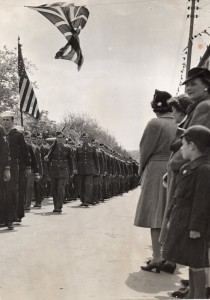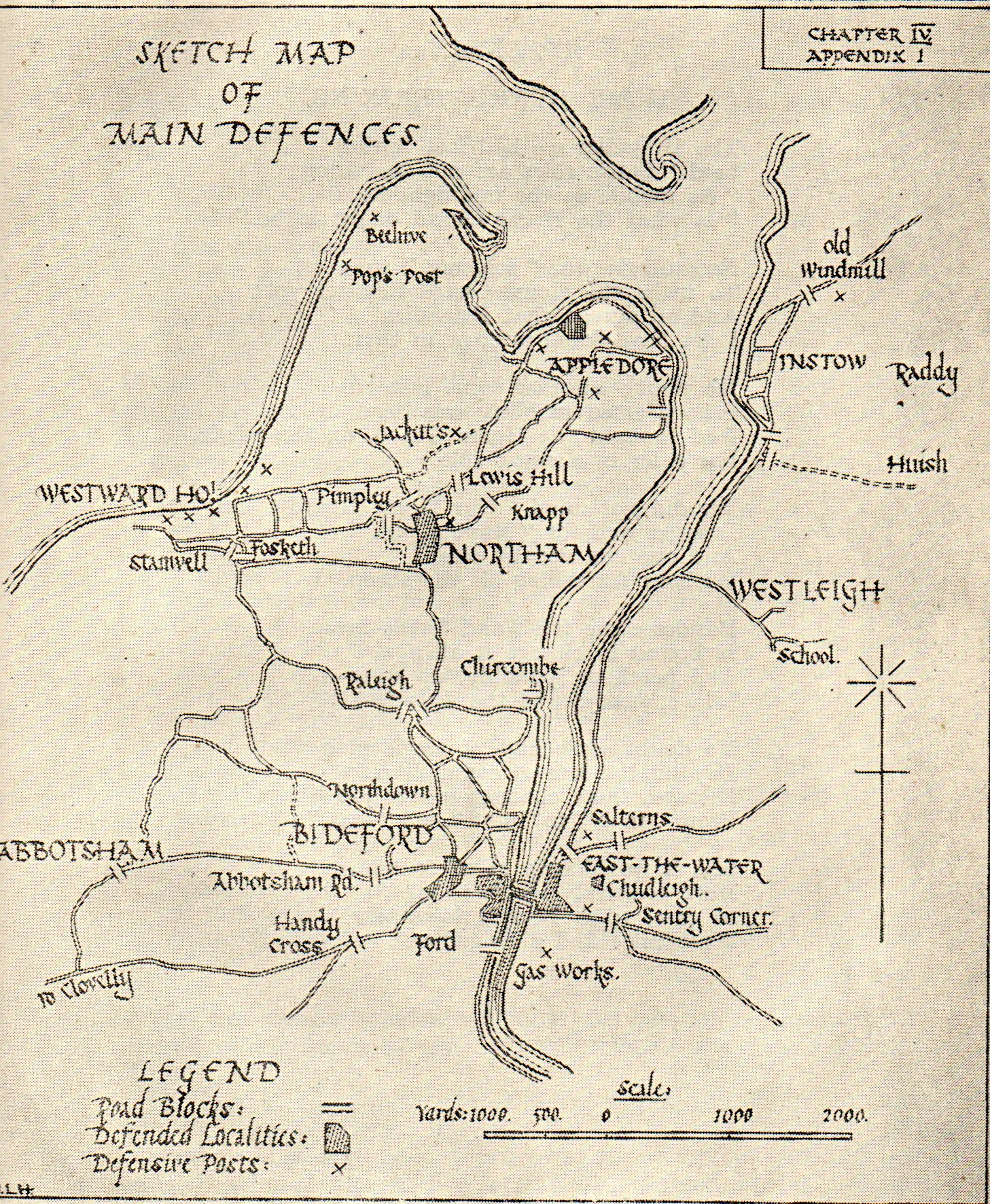Little has been written on Bideford life during the Second World War. Admittedly we  weren’t bombed, but we did provide facilities for training both British and U.S. Servicemen and the area played host to the top-secret Combined Operations. One source I came across recently adds a few details to our knowledge of a period where news was heavily censored in local and national newspapers. For many years Frank E.Whiting, a local architect who served as a long term town councillor, was the Warden to the Bridge Trust where he looked after the Trust’s property. Every month he filed a hand written report, and these survive amongst the Trust’s records.
weren’t bombed, but we did provide facilities for training both British and U.S. Servicemen and the area played host to the top-secret Combined Operations. One source I came across recently adds a few details to our knowledge of a period where news was heavily censored in local and national newspapers. For many years Frank E.Whiting, a local architect who served as a long term town councillor, was the Warden to the Bridge Trust where he looked after the Trust’s property. Every month he filed a hand written report, and these survive amongst the Trust’s records.
Each report is usually fairly short and very much to the point. Thus on July 26 1939 he notes, amongst other things, ‘The pointing to the 12th Arch [of the Bridge] is proceeding satisfactorily, but I have to do rather more to the lower portion of the piers than with most of the other arches.’ The next report on August 30 carries the first war-related entry, some four days before hostilities began; ‘Under a Ministry Order white lines have been painted on the kerbs to the approaches of the Bridge.’ This was designed to help drivers during the ‘black out’ when both vehicle and street lights were severely curtailed.
On September 27 he notes, ‘I examined the Bridge after a ship had touched it last week, but except for the fact that it had scraped off a little of its paint, there was no damage to the Bridge.’ One wonders if the ship was one of those commandeered at the outbreak of war who didn’t know Bideford and the Torridge that well. Whiting completed his report on a personal note, ‘I think it is quite possible that owing to the War we shall have to give up our offices; should this happen I should be obliged if the Trustees would grant me this room as an Office for Bridge work.’ At this date the Warden and his partner Burnett Orphoot, a noted Scottish architect who had local connections, were running their office from 21, High Street, whilst the Bridge Trust was based in Bridge Buildings.
From this report until June 1940 there are no war related items, perhaps reflecting the ‘Phoney War’ period when nothing much happened between the opposing armies. In May 1940, however, France was invaded and on May 14 Anthony Eden, the new Secretary for War in Winston Churchill’s cabinet, called for volunteers to help the regular forces if the Nazis invaded. Known at first as the Local Defence Volunteers, the name was soon changed to the Home Guard, and in the month of June 800 Bideford men were enrolled – a total which had risen to 1,046 by August 1.
The fear of invasion by sea and air was presumably behind Whiting’s note in his report of June 26 1940, ‘At the request of the Police we are removing the ladders & scaffolding from No.10 Arch’. Presumably it was thought that sea-borne invaders could have clambered up the ladders to capture the Bridge – always seen as pivotal to the defence of Bideford. The following month the Warden noted that ‘A representative of Minimax called on me to know if we required any Fire Extinguishers for the Bridge Buildings’ – a reminder that many parts of England were suffering heavy aerial bombardment?
In August Whiting records that ‘The Ministry of Transport wrote to me to ask if the Bridge was being guarded by the Police, Military or Home Guard. I made enquiries of these bodies, and as a result replied that the Home Guard patrolled it from 1½ hours before low water to 2 hours after low water when this occurred during the hours of darkness.’
From then until April 1941 there are no war related entries but in that April it is recorded that ‘The fire watcher points out that to get about the roof of the Bridge Buildings he only has the ceiling joists to walk on.’, adding ‘Shall I get some walking boards put down?’
In June 1941 an odd entry occurs concerning a man arrested by the police ‘for taking Mussels from the Bridge’. For centuries mussels were used to help anchor stones placed around the Bridge piers to help prevent scour. The unknown mussel collector had removed 18 lbs of the shellfish – presumably to supplement his food rations. Whiting notes that there was no law to stop him doing this, and thus the police ‘let him off with a warning.’ (Continued in next edition).
Peter Christie. Photo (US servicemen marching on Quay) is from his book ‘Illustrations of Old Bideford’ Vols.1-5. Below – Home Guard, Bideford, plan of defences.

